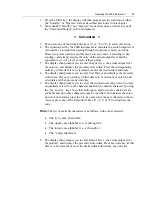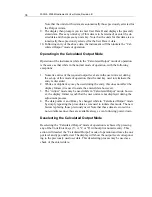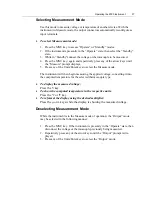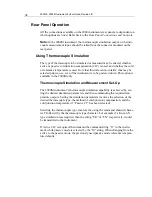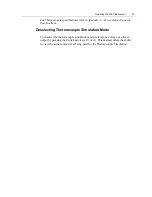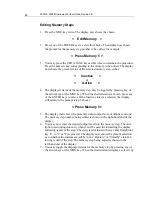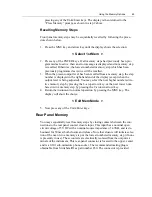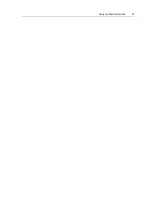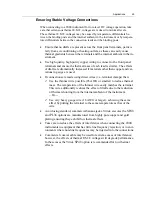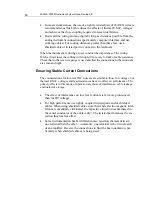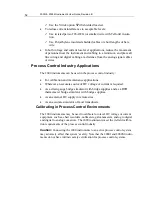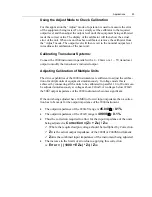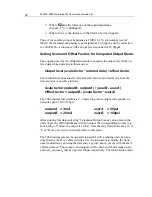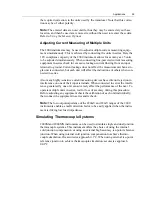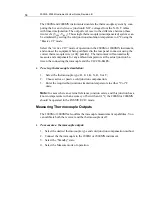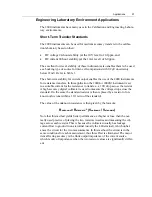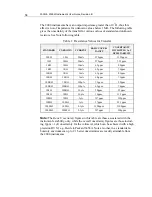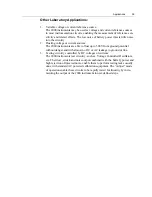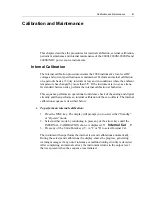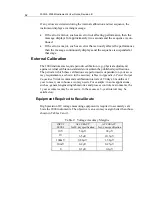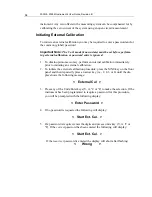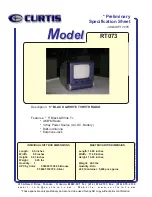
Applications 49
Ensuring Stable Voltage Connections
When connecting to a 2000 instrument for low-level DC voltage operation, take
care that extraneous thermal E.M.F. voltages are reduced to minimal levels.
These thermal E.M.F. voltages may be caused by temperature differentials be-
tween the binding posts and the internal ambient in the instrument or by tempera-
ture differentials between the connection leads and the binding posts.
•
Ensure that no drafts are present across the front panel terminals, particu-
larly from air conditioning or heating outlets, as these can easily cause
thermal gradients between the terminals and the internal ambient in the in-
strument.
•
Use high quality, high purity copper wiring to connect to the front panel
terminals and ensure the thermal mass of each lead is similar. The effects
of drafts are dramatically increased if materials other than copper and var-
iations in gauge are used.
•
If connections are made using direct wires (i.e., terminal clamps) then:
Use the thinnest wire possible (26 AWG or smaller) to reduce thermal
mass. The temperature of the thinner wire easily matches the terminal.
This wire additionally reduces the effect of drafts due to the reduction
of thermal shunting from the internal ambient of the instrument.
—Or—
Use very heavy gauge wire (16 AWG or larger), achieving the same
effect by pulling the terminal to the same temperature as that of the
wire.
•
Avoid using standard, commercial banana jacks.
Vitrek
en-sures the
SP48
and
PL36
options are manufactured from highly pure
copper and gold
plating, ensuring they exhibit low thermal effects.
•
Take care to reduce the effects of interference when connecting the 2000
instruments to equipment that has little line frequency rejection, or in envi-
ronments where non-line frequencies may be injected into the connections.
•
Commercial coaxial cable may be used for extreme cases of interference;
however, the effects of thermal E.M.F. voltages will degrade performance.
In these cases the
Vitrek
SP48
option is recommended for
low thermal
effects.
Summary of Contents for Xitron 2000 Series
Page 1: ...USER GUIDE 2000 Family DC Temperature Source Instruments...
Page 2: ......
Page 18: ...2000I 2000M Instrument s User Guide Revision B 18...
Page 42: ...2000I 2000M Instrument s User Guide Revision B 42...
Page 47: ...Using the Memory Options 47...
Page 60: ...2000I 2000M Instrument s User Guide Revision B 60...
Page 91: ......
Page 92: ...2000I 2000M Instrument s User Guide Revision B 92...
Page 95: ...Appendix B General Specifications 95...
Page 97: ...Password Page 97...

